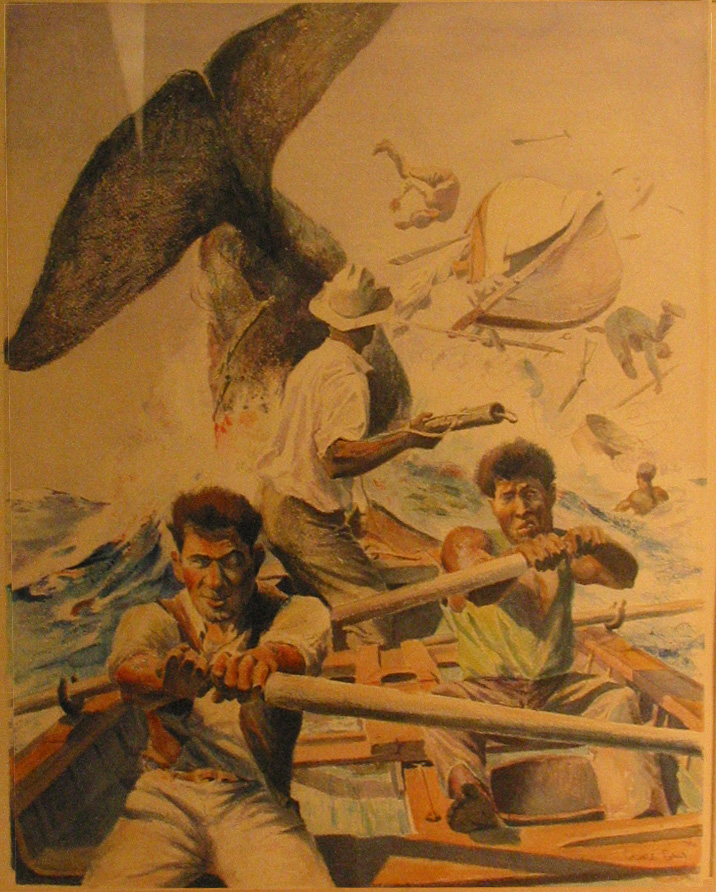Harpoons and Whalecraft
Installed on the first floor of the restored Bourne Building “Harpoons and Whalecraft” displayed the full spectrum of whaling weaponry devised in the 19th century, from classic harpoons to massive guns, providing new insight into what amounted to the greatest big-game hunt ever pursued by man. The high-risk business of whaling promised enormous financial gain and stimulated great innovation in the development of a vast array of weapons and ordnance to increase the odds of success.
A number of these weapons were inspired by seasoned whaling captains and produced by some of America’s most ingenious gunsmiths. The exhibits utilized the depth and diversity of the Museum’s comprehensive collection of harpoons, lances, bow-chaser cannons, shoulder guns, explosive devices, and rare firearms – and artworks illustrating their use in mortal combat with the Leviathan.
The exhibition illustrated the evolution of whalecraft technology and the vigorous spirit of innovation that characterized the whaling industry in its heyday. It also provided a global perspective on the evolution of the whale hunt, with many rare weapons of indigenous origin. Ethnographically significant indigenous specimens in the exhibition included harpoons and lances from the Azores, Bering Strait (Inupiaq), Cape Flattery (Makah), Greenland (Inuit), Siberia (Chukchi), Arctic Canada (Netsilik), and Tierra del Fuego, South America (Fuegian).
Also featured, the only known shoulder gun by master gunsmith Ethan Allen (Allen Thurber & Co.) of Grafton, Mass., circa 1854, and examples of every functional type of whaling harpoon and shoulder gun from 1820 to 1998. Additionally on display was an exceedingly rare Temple Toggle Iron made by the inventor, the African-American shipsmith Lewis Temple himself; and the only surviving full-scale Makah harpoon from the Washington Territory, made of whale bone with a yew-wood shaft more than 12 feet long.


